Shakespeare’s Hamlet is one of the most studied and discussed plays in world literature, and it’s the most popular of all of his works. Written around the year 1600, it explores grief, revenge, and the complex line between thought and action. It's commonly taught in high school English classes because it explores many facets of the human condition with lots of motifs, themes, and other literary devices. This guide explores how Prince Hamlet’s hesitation, doubt, and emotional turmoil lead to one of the most famous tragic endings in theater.

Act-by-Act Hamlet Summary and Analysis
Hamlet is an extremely long play. When performed with all actions and dialogues, it can be as long as four or five hours! So, it’s obvious that there is a lot to explore in the material. Most productions cut out parts of the play to make it a more reasonable length. The most important thing is to understand the ideas and themes, which are evident even when the script is shortened.
Act I
The play opens on a cold night at Elsinore Castle in Denmark. Guards and Hamlet’s friend Horatio spot a ghost that looks like the recently deceased King Hamlet. The ghost later speaks to the prince and reveals that he was murdered by his own brother, Claudius, who has now married Hamlet’s mother, Queen Gertrude, and taken the throne.
The ghost commands Hamlet to avenge his death. This sets the foundation for the protagonist's inner conflict. He promises to exact revenge, but is already uncertain how to act. His father’s ghost demanded justice, but he fears the spirit might actually be evil, tempting him toward sin.
Two of the biggest questions in the play are: Is the ghost really King Hamlet, and is he really talking to Prince Hamlet?
While other observers verify that the ghost was really visible, only Hamlet hears what it has to say. Does it really speak, or was Hamlet imagining it? And, is it really the deceased king, or is it a devil?
Later, he sees the ghost again, but Gertrude doesn't see or hear anything. Was the ghost really there, or was he also imagining that encounter?
There is no definitive answer; it's up to us, the audience, to ponder the implications of both scenarios.
Around the same time, Prince Hamlet had been at dinner with Claudius and Gertrude. Their flippant attitude towards the King's death revolted the Prince and their “incestuous” marriage. Their attitude gives credibility to the spirit’s claims, but Hamlet still isn’t sure if the ghost is real, if Claudius really killed his father, and if it’s truly a good thing to seek revenge.
The act ends with Hamlet’s vow to remember his father and to uncover the truth behind the murder.
That one may smile and smile and be a villain.
Hamlet, Act 1, Scene 5
Act II
Hamlet’s behavior becomes increasingly strange. Claudius and Gertrude send Rosencrantz and Guildenstern (Hamlet’s school friends) to spy on him and find out what’s wrong. Meanwhile, Polonius, the king’s adviser, believes the prince's madness is caused by love for his daughter, Ophelia.
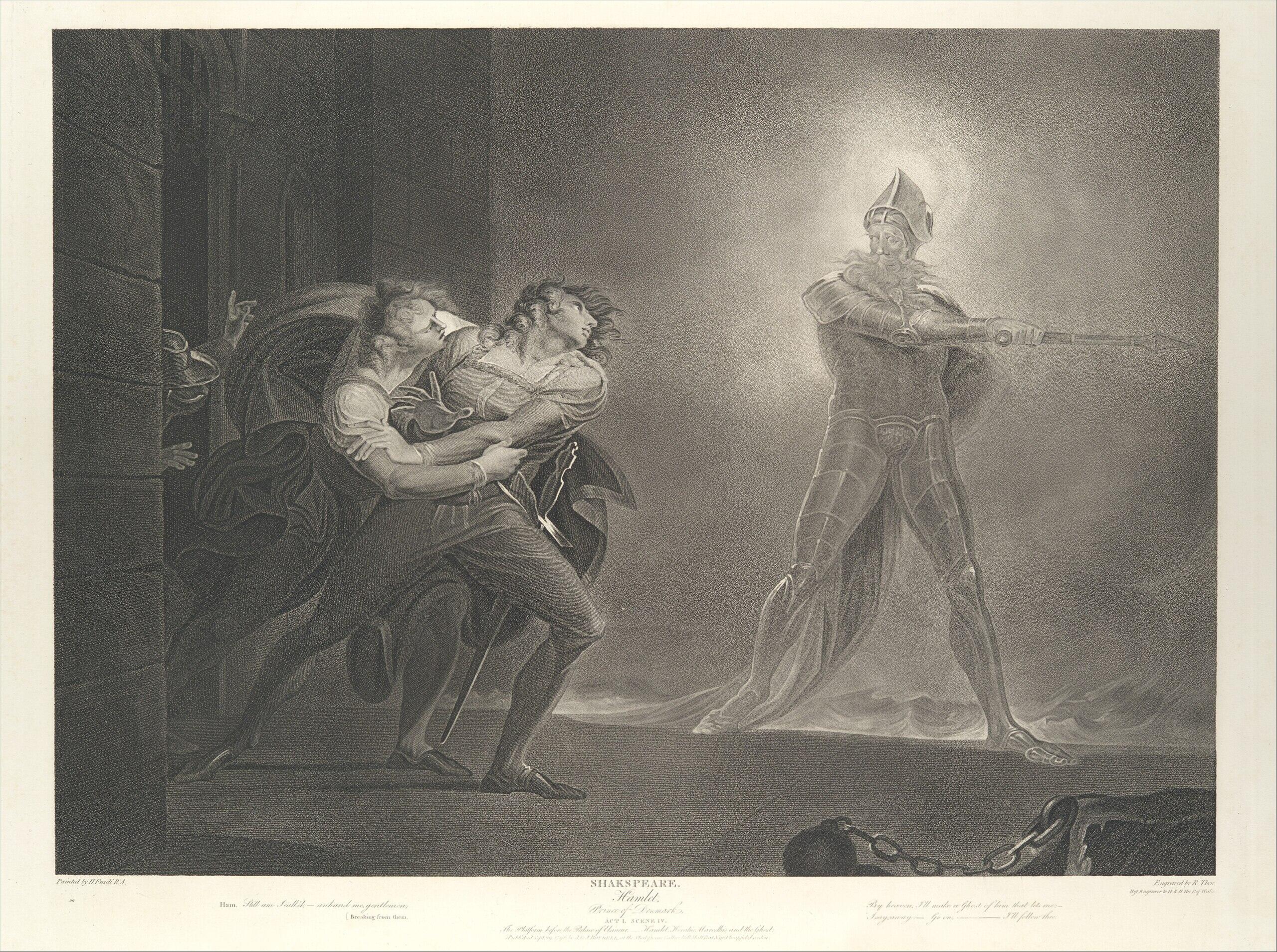
Hamlet had been acting bizarrely, especially toward Ophelia. Little do the others know that he is acting "mad" intentionally in order to trick them. Though he truly was interested in Ophelia before his father’s murder, Hamlet is now acting badly towards her, partly to spite/spy on Polonius.
When a group of traveling actors arrives, Hamlet asks them to perform a play that mirrors his father’s murder. He plans to watch Claudius’s reaction during the performance to confirm his guilt. He seeks proof of the crime to make a better decision regarding revenge.
Another literary work that explores knowledge vs ignorance is Fahrenheit 451.
There is / nothing either good or bad but thinking makes it / so.
Hamlet, Act 2, Scene 2
Act III
This act contains the most famous lines in English literature: Hamlet’s “To be, or not to be” soliloquy. Here, Hamlet contemplates life, death, and the fear of the unknown. He wonders if it is nobler to endure suffering in life or to end it all. He concludes that fear of the afterlife makes us all hesitate, afraid to die.
In an interaction with Ophelia, he says he used to love her, and also that he never loved her, further making himself appear “mad.”
Polonius concludes that Hamlet is neither in love with Ophelia nor is he entirely out of his mind; he can tell it's an act, but doesn't know the motive.
During the play performed for the court, Claudius reacts to the scene where the king is poisoned, which Hamlet takes as an admission of guilt.
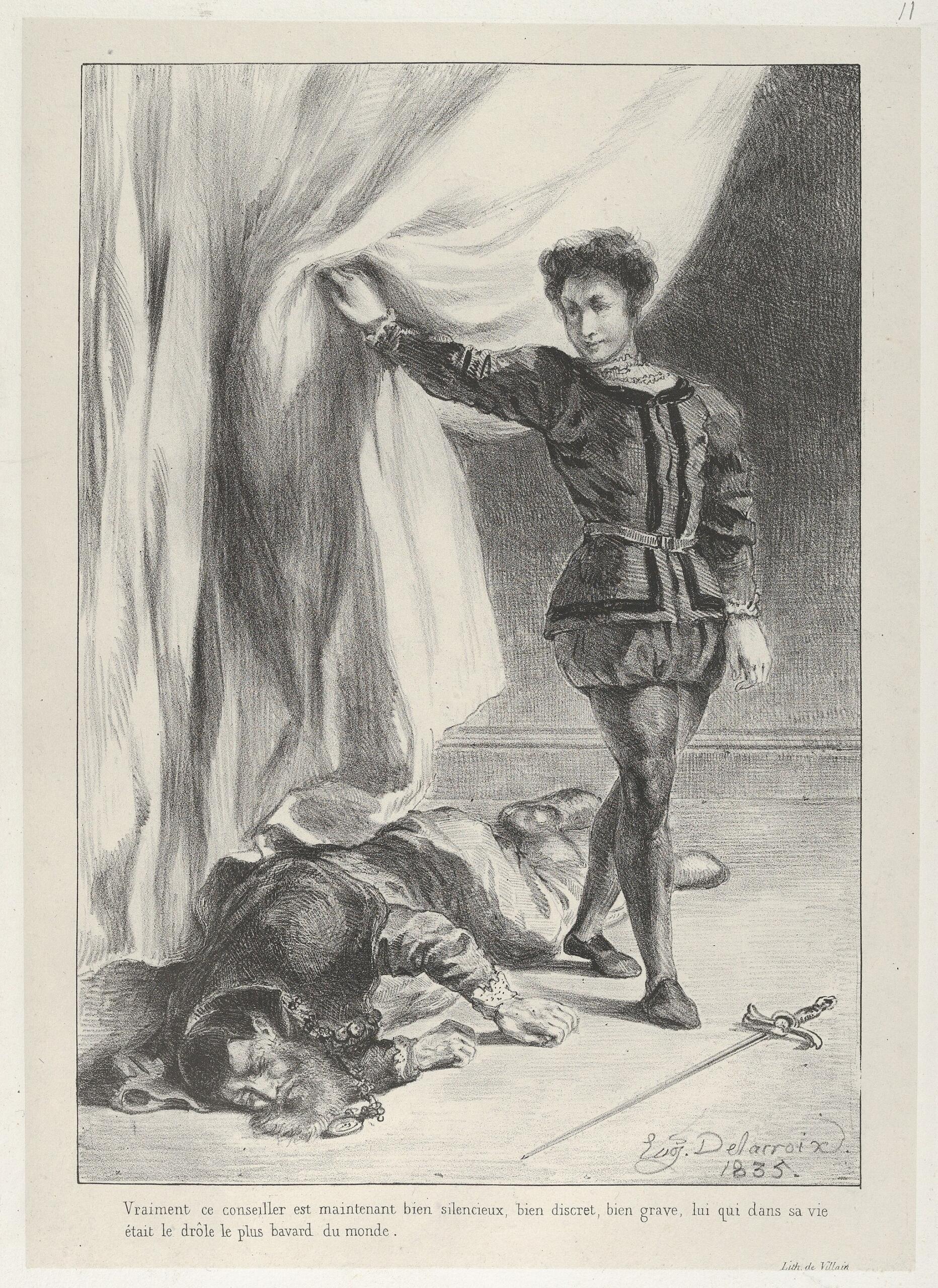
Later, Hamlet seeks Claudius, intending to confront or even kill him. He overhears Claudius praying and decides that someone murdered while praying will go to heaven, but Hamlet wants the murderer to go to hell, so he waits for another opportunity later. Crucially, he leaves without hearing the prayers.
Claudius plainly confesses to the murder, but only we, the audience, hear it. Had Hamlet heard the confession, perhaps he wouldn't have delayed his action further.
Later, in Gertrude’s room, Hamlet confronts his mother about her attitude surrounding the king’s death. Hearing a noise behind a curtain, he stabs blindly, killing Polonius instead of Claudius.
This accidental murder begins the play’s downward spiral. Claudius sees Hamlet as a threat and plans to send him to England under the pretense of safety, but with secret orders for his execution. He can’t do anything to Hamlet personally because the Danish people love him.
To be, or not to be, that is the question.
Hamlet, Act 3, Scene 1
Act IV
Ophelia is devastated by her father’s death and Hamlet’s erratic behavior. Her grief and confusion drive her into madness. Claudius sends Hamlet to England with Rosencrantz, Guildenstern, and the secret letters ordering the prince's execution. Laertes (Polonus’s son) arrives at the castle, dismayed by his father’s murder and Ophelia’s condition.
At this point, the people of Denmark are calling for Laertes to take the throne. Laertes, at the moment, is only concerned about exacting revenge against Hamlet for killing his father and driving his sister mad.
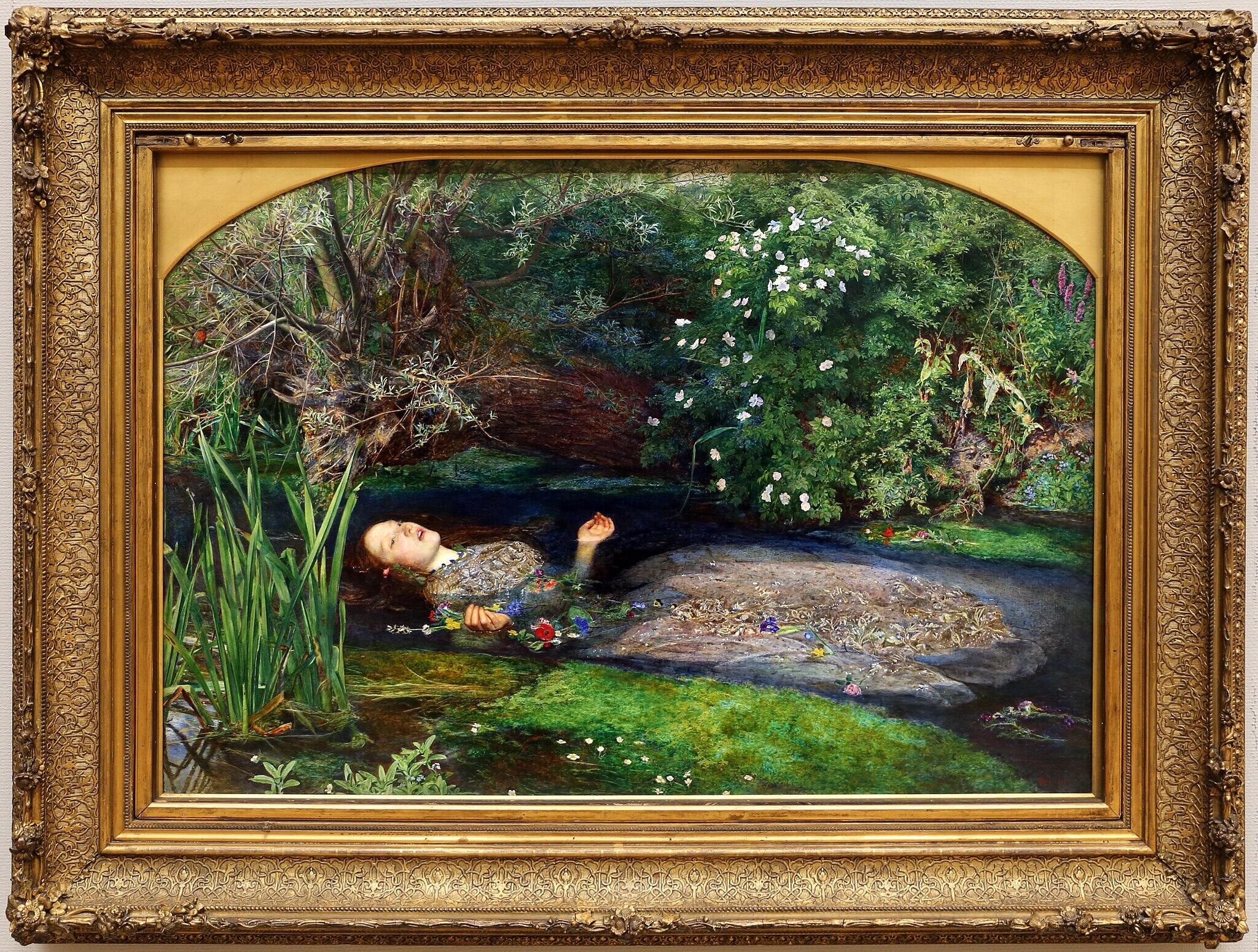
Meanwhile, Hamlet escapes the ship bound for England after discovering Claudius’s plan to kill him. He returns to Denmark, reinvigorated in his revengeful thoughts.
Claudius and Laertes plan to arrange a duel between Hamlet and Laertes. They discuss ways to ensure Hamlet dies in the encounter using a poisoned sword and wine. It is then that Ophelia is discovered, drowned, though it’s unclear if it’s suicide or an accident.
Like Hamlet, the characters in Animal Farm often use language as a form of manipulation.
O, from this time forth / My thoughts be bloody, or be nothing worth!
Hamlet, Act 4, Scene 4
Act V
The final act begins in a graveyard. Two gravediggers joke as they dig Ophelia’s grave, removing old bones to make way for the new ones. Hamlet reflects on the inevitability of death and finds the skull of Yorick, the king’s jester from his childhood. He exclaims his famous line: “Alas, poor Yorick! I knew him, Horatio: A fellow of infinite jest.”
He has an existential crisis when he realizes that all people, regardless of status or ambition, ultimately end up the same in death, turning to dust.
At Ophelia’s funeral, Hamlet and Laertes fight in the fresh-dug grave.
They end up leaving the graveyard and later have the planned duel.
During the match, Laertes wounds Hamlet with the poisoned sword but is also struck himself.
Gertrude accidentally drinks from the poisoned cup meant for Hamlet and dies.
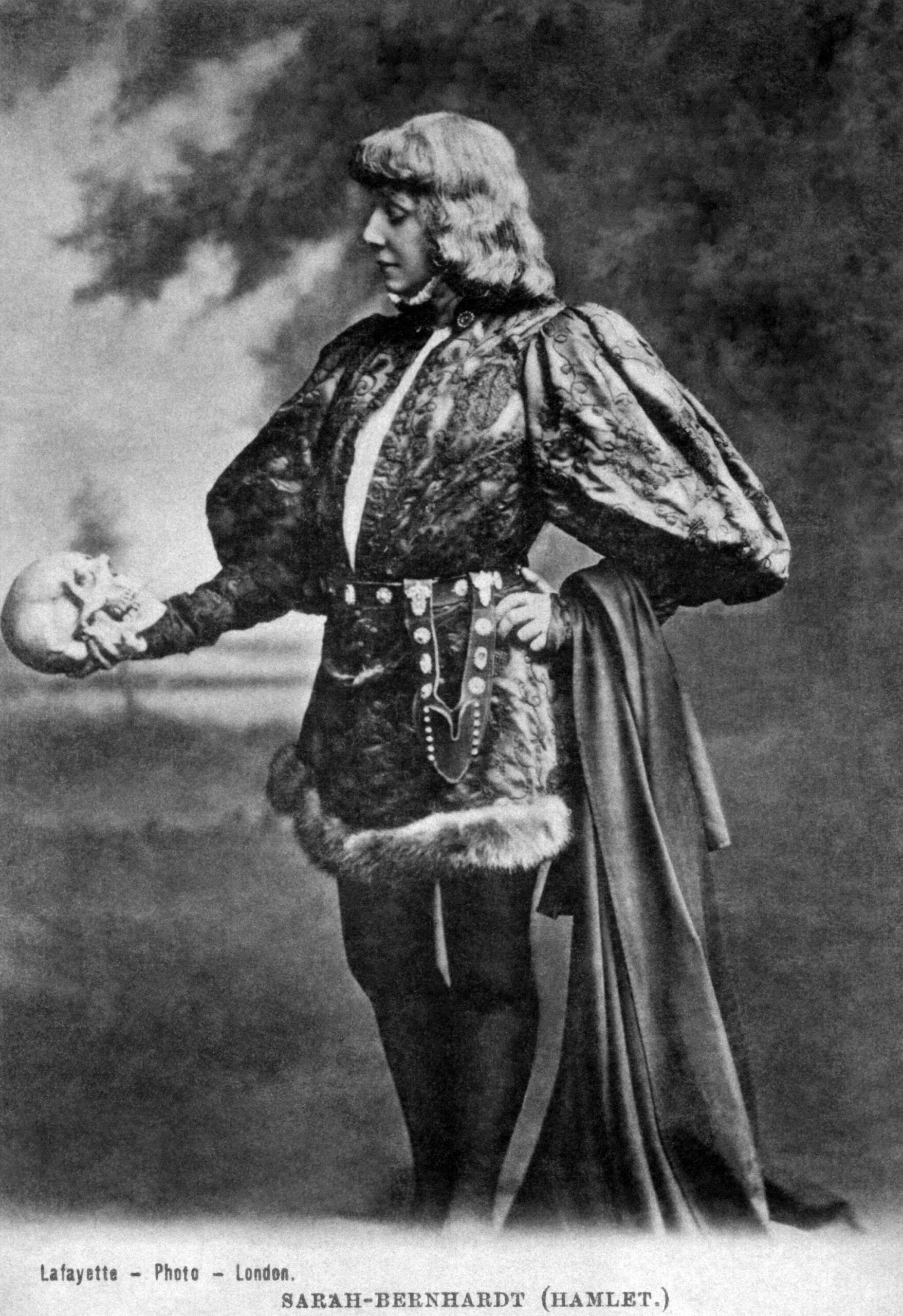
Before dying, Laertes confesses Claudius’s plot to Hamlet. Hamlet finally kills Claudius and then succumbs to his own wounds. As he dies, he asks Horatio to tell his story truthfully. Fortinbras, the prince of Norway, enters to find the royal family dead and ends up taking control of Denmark.
The play ends in silence, with Horatio left to tell the tale of Hamlet and all those involved with the fall of the royal family. Fortinbras is set to take the throne, rewarded for his commitment to action and duty.
If it (death) be now, / 'tis not to come; if it be not to come, it will be / now; if it be not now, yet it will come. The / readiness is all.
Hamlet, Act 5, Scene 2
Character Analysis of Hamlet
Each character in Hamlet serves a specific purpose and is used to display different messages. Understanding the characters’ thoughts, experiences, and interactions with other characters is key to discerning what messages they are meant to convey. Here, we’ll discuss key characteristics of each character, including their importance in the story and what messages they help communicate.
Hamlet
Prince Hamlet is intelligent, sensitive, and deeply philosophical. His father’s death disturbs him profoundly, and unlike Laertes, he reacts with reflection instead of action. Haunted by the ghost’s demand for revenge, he struggles between justice and moral corruption.
His mind battles reason and emotion, and his hesitation to kill Claudius without adequate proof shows his concern for right and wrong. His deep, internal philosophical quandaries make him a mystery even to those around him and to us, the audience.
His famous speeches reveal that he is paralyzed by deep thought. By the end, his revenge feels more like surrender to fate than victory. Though a prince, Hamlet’s inward focus and navel-gazing blind him to the needs of others, including his country. His emotional choices, like killing Polonius, create more chaos than resolution. He embodies the danger of overthinking when action is needed, showing how too much introspection can paralyze rather than guide.
O, that this too, too solid flesh would melt, / Thaw and resolve itself into a dew!
Hamlet, Act 1, Scene 2
Claudius
King Claudius is both villain and politician. His intelligence and charm disguise his guilt. He manipulates others, uses religion as a shield, and maintains power through deceit.
Where the other male characters in the play are often concerned with honor, justice, and revenge (especially weighed against morality), Claudius is really only worried about maintaining power. He did kill his brother to become king, and he quickly married his widowed sister-in-law, intending to entirely replace King Hamlet and enjoy all the same perks.
His charisma allows him to persuade people into uncharacteristic actions, such as convincing Gertrude to marry him and getting Rosencrantz and Guildenstern to become his spies.
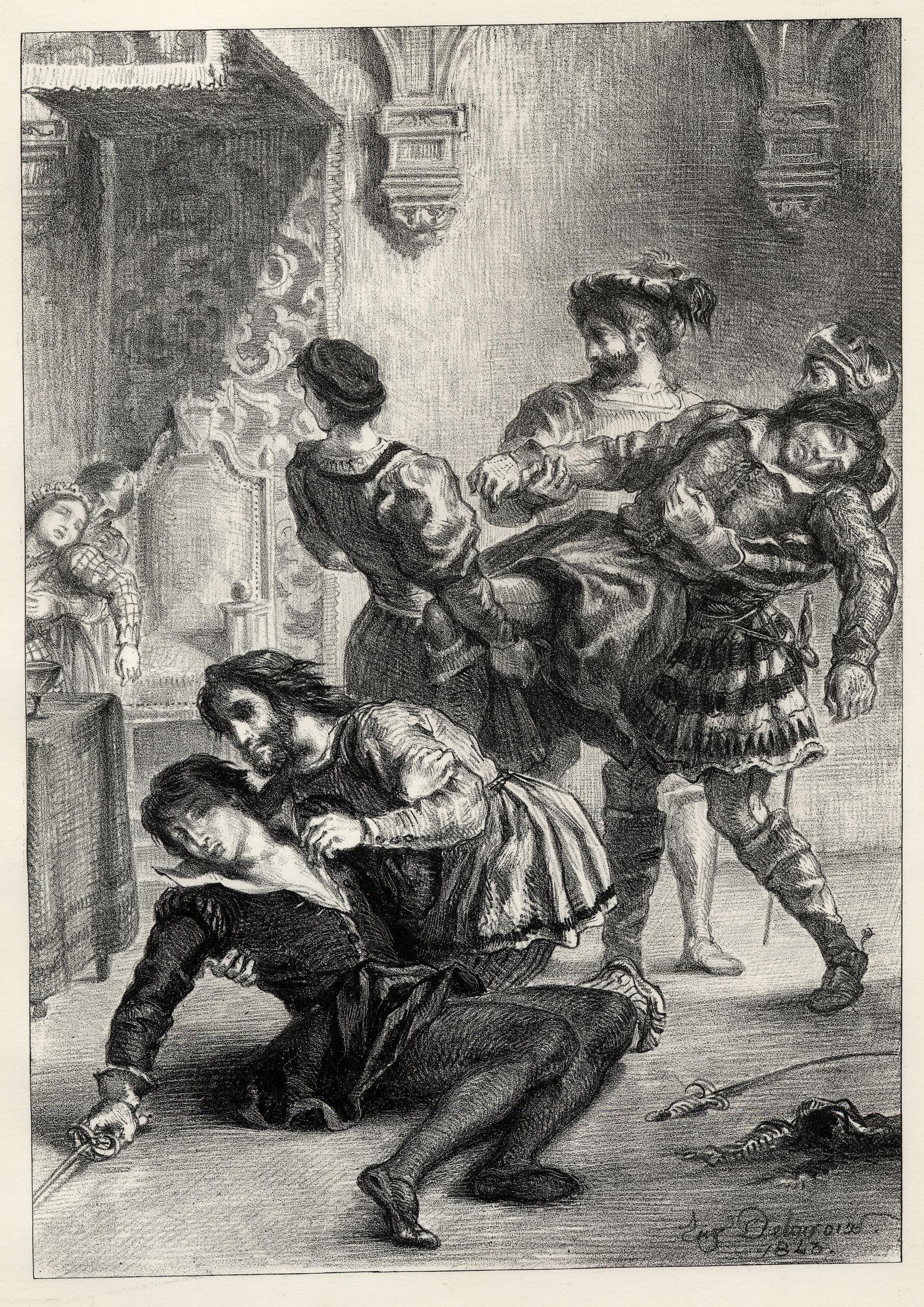
Claudius’s prayer scene in Act III shows his inner conflict with himself.
He admits his sin but cannot truly repent because he still enjoys the rewards of his crime.
Shakespeare gives Claudius moral complexity; he is evil, but not one-dimensional.
Ultimately, his frantic and cowardly clinging to power is what causes his downfall.
Sending Hamlet away and trying to fix the duel with poison, both Claudius’s own actions, directly contribute to his demise.
Claudius’s complex character is an obvious reminder that all the characters in this play contain multitudes. We may or may not see them, but the idea is that no character is purely good or evil, or purely moral or immoral.
My words fly up; my thoughts remain below. / Words without thoughts never to heaven go.
Claudius, Act 3, Scene 3
Gertrude
Queen Gertrude is often misunderstood, which appears to be intentional. Shakespeare doesn’t give us much insight into her thought processes, opinions, or experiences. It’s unclear whether she loved King Hamlet, whether she knew Claudius murdered him, and whether she was involved with Claudius before the King's murder, among other questions. We know she is graceful and charming, but that’s about it.
Her moral stance seems very weak and entirely dependent on the situation around her. Gertrude’s actions can be seen as necessary to maintain safety and station in a patriarchal world. By definition, her moral convictions cannot be very strong, then, since she needs to change what she does to suit the situation. Hamlet sums this up with a concise quote: “Frailty, thy name is woman!” (1.2.146).
Do not forever with thy vailèd lids / Seek for thy noble father in the dust. / Thou knowst ’tis common: all that lives must die, / Passing through nature to eternity.
Gertrude, Scene 1, Act 2
She is done in by the same mechanism she lived by: dependent on the decisions of the men around her. Because Claudius decides to poison the wine (and not tell her about it), she is killed.
Ophelia
Ophelia represents innocence and obedience. At the beginning of the play, she appears gentle, dutiful, and intelligent. She is urged to “remain pure,” and passes the same message to others, too. Flowers represent her message.
Controlled by her father and brother, she never develops her own voice. Her love for Hamlet is sincere, but his cruelty and her father’s manipulation break her spirit. Her descent into madness mirrors Hamlet’s own psychological struggle, but she lacks his privilege to question herself or choose to act.
An oppressed young woman in a restrictive royal court, Ophelia is under a lot of pressure to act in certain ways that often contradict. It’s commonly thought that she commits suicide by drowning, perhaps because it was the only thing she could really do of her own volition.
Like Ophelia, Daisy from The Great Gatsby is another stifled female character.
But, good my brother, / Do not, as some ungracious pastors do, / Show me the steep and thorny way to Heaven / Whiles, like a puffed and reckless libertine, / Himself the primrose path of dalliance treads / And recks not his own rede.
Ophelia, Act 1, Scene 3
Polonius
Polonius is pompous and controlling but not malicious. His self-unawareness highlights Hamlet’s excessive self-awareness in a comic way. He is a loving and loved father, but even still, he acts in dubious ways, like using Ophelia to bait Hamlet.
His death behind the curtain is both morbidly comical and tragic. It’s a symbol of how deception breeds destruction.
Therefore, since brevity is the soul of wit / And tediousness the limbs and outward flourishes, / I will be brief.
Polonius, Act 2, Scene 2
Laertes
Laertes acts as Hamlet’s foil. Where Hamlet hesitates, Laertes rushes to act. His straightforward pursuit of revenge contrasts sharply with the prince's overly reflective nature.
Yet by the end, Laertes realizes the moral cost of vengeance. He is apologetic for hastily taking revenge on Hamlet, and especially for colluding with Claudius to cheat with poison.
The lesson that can be learned by comparing Laertes and Hamlet is that too much contemplation and inaction, and too much action without contemplation, are both recipes for disaster.
But let him come; / It warms the very sickness in my heart, / That I shall live and tell him to his teeth, / “Thus didest thou.”
Laertes, Act 4, Scene 7
The Ghost
The ghost of King Hamlet is the catalyst for the story’s events. Although Claudius committed the initial incident by murdering the King, the ghost speaks to his son, kicking off the cascade of self-reflection and resulting actions.

It appears the king’s ghost attempts to explain things as clearly and reasonably as possible to the prince, but the message is immediately obscured by Hamlet’s own faults.
The ghost wants Hamlet to exact revenge for personal reasons, but more so because he doesn’t want a selfish, greedy king to be on the Danish throne.
This highlights Hamlet’s inability to think beyond himself; even a ghost is more concerned with politics than he is.
However, it’s also important to remember the ghost is a mystery. It might be the King, or it could be a trick from a devil. The messages in the story change depending on which interpretation you view the play through.
For Hamlet, the ghost raises questions about truth, morality, and the limits of human understanding.
1984 by George Orwell is a great novel for another perspective on human free will.
Pity me not, but lend thy serious hearing / To what I shall unfold.
Ghost, Act 1, Scene 5
Other Characters
Rosencrantz and Guildenstern, Hamlet’s school friends, appear to have become greedy and untrustworthy over the years. They are used as tools by Claudius and end up victims of their own betrayal.
Horatio is the most loyal and rational character. He is Hamlet’s best friend. They start with a similar level of intelligence and demeanor, and it’s possible to better judge how much Hamlet changes by the difference in his and Horatio’s behavior over the course of the play. Horatio’s actions are the most level-headed in terms of morality and rationality, giving the audience a better sense of how irrational and immoral many of the other characters behave.
Fortinbras, though mostly offstage, embodies decisive action and serves as Hamlet’s contrast. Like Hamlet, his father is killed and his uncle takes the throne. He takes decisive action aligned with his princely duties and sets off to reclaim some of the land lost in his father’s last battle. Fortinbras’ arrival at the end restores order but also emphasizes the human cost of ambition.

Themes and Motifs
There are many messages conveyed with themes in Hamlet. In fact, the sheer number of symbolic items, ideas, words, gestures, etc, is staggering, and it’s impossible to cover them all in a short analysis! Here are some of the most important themes found in the famous play.
Revenge
Revenge is the foundation for the play, but it’s handled quite differently by the characters than we expect. Hamlet wants to seek justice for his father’s murder, but he contemplates all the philosophical quandaries about life and death too much to be effective. Laertes hastily wants to avenge his father, which almost leads him to kill the king and queen. Ultimately, he ends up killing Hamlet, but feels remorse for his actions (and is also done in by them).
Revenge corrupts everyone it touches.
Rosencrantz and Guildenstern are killed by Hamlet’s revenge (when he finally becomes decisive), Polonius is killed by Hamlet’s attempt to exact revenge, Ophelia is killed by the madness that comes from Hamlet’s harsh, revengeful words, as well as her father’s demise, and Gertrude is killed by Claudius and Laertes trying to get revenge against Hamlet. Claudius is killed by his own actions when attempting to get revenge against the prince for threatening his safety.
To Kill a Mockingbird is a novel that also tackles the theme of justice.
The Impossibility of Certainty (Doubt)
Hamlet’s greatest struggle is uncertainty. He doubts the ghost’s honesty, doubts his mother’s loyalty, and doubts his own courage. He decides to delay his actions until he gets more proof, but even then, he still feels doubtful.
In a tragic turn, when Hamlet feels like he has finally worked up the courage to make a decision, he fails to gather the most crucial information in the moment: who was behind the curtain?
He is both too reliant on gathering information and doesn’t gather enough, reflecting the human tendency to do just that in our daily lives.
His constant questioning shows how hard it is to find truth in a world full of deception.
Actions and Their Implications
Every action in Hamlet has unforeseen consequences. Hamlet kills Polonius by mistake, Claudius’s schemes backfire, and even Gertrude’s attempt to comfort her son leads to her death. The message suggests that no one can fully control the results of their choices.
Read about more human decisions leading to violence and tragedy with The Lord of the Flies.
The Mystery and Philosophy of Death
Death is the play’s constant presence. Hamlet obsesses about it, wondering what it’s like and questioning the point of life altogether. His reflections in the graveyard reveal his fascination with what lies beyond. For him, it's both an escape and a great unknown. Shakespeare uses this theme to explore the limits of human knowledge and the fear we all share about what happens after life ends.

Losing Yourself in Performance
Hamlet uses performance as a weapon and a tool. He pretends to be mad to manipulate Gertrude, Ophelia, and Polonius. He hires a theater troupe to put on a play to manipulate Claudius into confessing his crime. Eventually, it appears the prince is consumed by his feigned madness and becomes truly unhinged.
Ophelia is forced to play the innocent, chaste, good girl in the court. She never gets to explore her true personality, getting smothered by the roles assigned to her. Perhaps this is why she is so easily disturbed and ends up dying.
Shakespeare even includes meta-commentary about performance, including ideas about how performance can feel real and is a reflection of reality within the play (which reminds the audience that it, too, is a performance).
Madness
Madness runs beneath every theme. Hamlet’s “antic disposition” may begin as an act, but it becomes a reflection of real emotional turmoil. Meanwhile, Ophelia’s madness is genuine and tragic. Even Laertes can be considered to have gone temporarily manic as he seeks immediate revenge against Hamlet without considering the situation.
The play suggests that madness is both a response to grief and a release from unbearable truth.
Hamlet Quiz
Ready to test your knowledge? Here are some of the most common questions about Hamlet found on school tests and quizzes. When studying for your English literature class, make sure you understand at least these core aspects of Shakespeare’s Hamlet!















